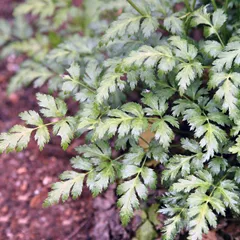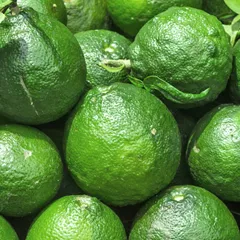Xie Xin Tang
Chinese: 泻心汤
Pinyin: Xiè Xīn Tāng
Other names: Draining the Heart Decoction, Drain the Epigastrium Decoction,



Xie Xin Tang
Chinese: 泻心汤
Pinyin: Xiè Xīn Tāng
Other names: Draining the Heart Decoction, Drain the Epigastrium Decoction,
Ingredients: 3 herbs
Category: Formulas that clear Heat and resolve toxicity
- Drains Fire
- Resolves Toxicity
- Dries Dampness
Contraindications: Contraindicated in those with Cold symptoms due to Spleen Deficiency.
Source: Essentials from the Golden Cabinet (220 AD)
The information provided here is not a replacement for a doctor. You shouldn't use it for the purpose of self-diagnosing or self-medicating but rather so you can have a more informed discussion with a professional TCM practitioner.
Xie Xin Tang is a 3-ingredient Chinese Medicine formula with Rhubarb (Da Huang) as a principal ingredient.
Invented in 220 AD, it belongs to the category of formulas that clear Heat and resolve toxicity. Its main actions are: 1) drains Fire and 2) resolves Toxicity.
In Chinese Medicine health conditions are thought to arise due to "disharmonies" in the body as a system. These disharmonies are called "patterns" and the very purpose of herbal formulas is to fight them in order to restore the body's harmony.
In this case Xie Xin Tang is used by TCM practitioners to fight patterns like Heart Fire blazing or Pericardium Fire. From a Western Medicine standpoint, such patterns can give rise to a range of conditions such as carbuncles, furuncles or tonsilitis for instance.
On this page, after a detailed description of each of the three ingredients in Xie Xin Tang, we review the patterns and conditions that Xie Xin Tang helps treat.
The three ingredients in Xie Xin Tang

Da Huang is a king ingredient in Xie Xin Tang. Like the name indicates, it means it has more power than other ingredients in the formula.
1. Rhubarb (Da Huang)
Part used: Dried root and rhizome
Nature: Cold
Taste(s): Bitter
Meridian affinity: SpleenStomachLarge intestineLiverPericardium
Category: Purgative herbs that drain downward
Da Huang drains excessive Fire. It also has the purging function that direct the Heat downwards and break up the clumping. Finally, it enters the Blood and stop bleeding, especially in the upper pat of the body.

Huang Lian is a deputy ingredient in Xie Xin Tang. This means it helps the king ingredient(s) treat the main pattern or it serves to treat a coexisting pattern.
2. Goldthread Rhizomes (Huang Lian)
Part used: Dried rhizome
Nature: Cold
Taste(s): Bitter
Meridian affinity: GallbladderHeartLarge intestineLiverSpleenStomach
Category: Herbs that clear Heat and dry Dampness
Huang Lian ,together with the other deputy herb Baikal skullcap root, drains Heat from the Upper and Middle Burners.

Huang Qin is a deputy ingredient in Xie Xin Tang. This means it helps the king ingredient(s) treat the main pattern or it serves to treat a coexisting pattern.
3. Baikal Skullcap Roots (Huang Qin)
Part used: Dried root
Nature: Cold
Taste(s): Bitter
Meridian affinity: GallbladderHeartLarge intestineLungSmall intestineSpleen
Category: Herbs that clear Heat and dry Dampness
Huang Qin ,together with the other deputy herb Goldthread rhizome, drains Heat from the Upper and Middle Burners.
Conditions and patterns for which Xie Xin Tang may be prescribed
It's important to remember that herbal formulas are meant to treat patterns, not "diseases" as understood in Western Medicine. According to Chinese Medicine patterns, which are disruptions to the body as a system, are the underlying root cause for diseases and conditions.
As such Xie Xin Tang is used by TCM practitioners to treat two different patterns which we describe below.
But before we delve into these patterns here is an overview of the Western conditions they're commonly associated with:
Carbuncles Furuncles Tonsilitis Conjunctivitis Hypertension Atherosclerosis Hemorrhage Stroke
Again it wouldn't be correct to say "Xie Xin Tang treats carbuncles" for instance. Rather, Xie Xin Tang is used to treat patterns that are sometimes the root cause behind carbuncles.
Now let's look at the two patterns commonly treated with Xie Xin Tang.

The Heart is a so-called "Zang" Organ. Learn more about the Heart in Chinese Medicine
Heart Fire blazing
Pulse type(s): Overflowing (Hong), Rapid (Shu), Full (Shi), Hasty (Cu)
Symptoms: Thirst Anxiety Insomnia Red face Dark Urine Palpitations Mouth ulcers Bloody urine Tongue ulcers Restlnessness Feeling of heat Dream disturbed sleep Bitter taste in the mouth
Xie Xin Tang is sometimes prescribed by TCM practitioners to treat Heart Fire blazing. This pattern leads to symptoms such as palpitations, thirst, mouth ulcers and tongue ulcers. Patients with Heart Fire blazing typically exhibit overflowing (Hong), rapid (Shu), full (Shi) or hasty (Cu) pulses.
Different from Heart Yin Deficiency which is an Empty-Heat pattern, the Heart Fire blazing here is a Full-Heat one. The typical manifestation of Full-Heat are thirst, red face, feeling of heat, red tongue and Rapid Overflowing or Hasty Pulse.
The Heart opens to the tongue, therefore Heart Fire... read more about Heart Fire blazing

The Pericardium is a so-called "Zang" Organ. Learn more about the Pericardium in Chinese Medicine
Pericardium Fire
Pulse type(s): Overflowing (Hong), Rapid (Shu), Full (Shi)
Symptoms: Thirst Anxiety Insomnia Red face Chest heat Palpitations Mouth ulcers Rapid breath Tongue ulcers Restlnessness Heavy periods Feeling of heat Mild chest pain Dream disturbed sleep Bitter taste in the mouth Stifling sensation in the chest
Xie Xin Tang is sometimes prescribed by TCM practitioners to treat Pericardium Fire. This pattern leads to symptoms such as palpitations, stifling sensation in the chest, bitter taste in the mouth and insomnia. Patients with Pericardium Fire typically exhibit overflowing (Hong), rapid (Shu) or full (Shi) pulses.
The Mind resides in both the Heart and the Pericardium. It can be greatly disturbed by Fire in these two Organs and cause symptoms like insomnia, mental restlessness, agitation, and dream disturbed sleep. Comparing with Pericardium Blood Deficiency, the manifestations of above mental emotion are... read more about Pericardium Fire
Formulas similar to Xie Xin Tang
Ge Geng Huang Qin Huang Lian Tang is 50% similar to Xie Xin Tang
Huang Lian Jie Du Tang is 50% similar to Xie Xin Tang
Huang Lian Jiao Du Tang is 50% similar to Xie Xin Tang
Gun Tan Wan is 50% similar to Xie Xin Tang
Huang Lian E Jiao Tang is 40% similar to Xie Xin Tang
Zhi Shi Dao Zhi Wan is 38% similar to Xie Xin Tang









